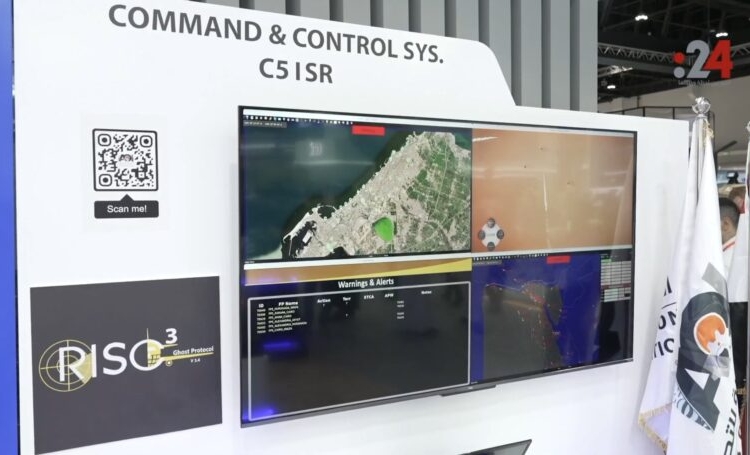Egypt’s defence company ACME SAICO unveiled during the IDEX 2023 defence exhibition; an indigenous (command, control, communications, computer, cyber, intelligence surveillance and reconnaissance) C5ISR system that can interact with both western and eastern defence systems.
ACME SAICO, Integrated Engineering Systems, debuts the C5ISR (command, control, communications, computer, cyber, intelligence surveillance and reconnaissance) system for the first time internationally at the AOI (Arab Organization for Industrialization) booth next to the Egyptian Ministry of Military Production at IDEX 2023.
According to the company’s Electronic Industries Division head, Ziad Badawi, the “C5ISR can deal with hybrid defence systems from different countries and following different protocols.” This is essential for Egypt which operates several platforms from across the world.
Egypt operates air defence radars [of] US, Chinese, Ukrainian, Russian and British origins, so we have been trying to collect the data from these sources in one system for operational efficiency,” Badawi said.
Likewise, Egypt’s air force operates aircraft from several manufacturers which include French-made Rafale and Mirage fighter jets and American F-16 Block 52 fighters, AH-64D Apache Longbow helicopters, and early warning E-2C Hawkeye planes. It also operates Eastern-origin aircraft including MiG-29M fighter jets, Ka-52 Alligator armed reconnaissance helicopters and Mi-24 combat multirole helicopters.
Thus, coordinating the operations of these disparate defence systems from different origins may be difficult during military activities.
ACME SAICO, Integrated Engineering Systems had earlier 2018 designed the RISC2 (Radar Integration and Surveillance Command Center) version of the system, which was upgraded to RISC 3 so it could perform combined missions with radars, missiles, aircraft, land forces, and counter-terrorism.
A further iteration, the RISC3 for aircraft operations, and other versions called CTC2 (Counter Terrorism Command Center) for land vehicle operations, and NAVC3 (Navy Combined command Center) for naval vessel operations.
“The system is operational and certified with Egyptian armed forces, it was integrated on all operational aircraft with the air force and will be in the aircraft to be received by them,” Badawi said.
Although there is little public knowledge about this system, however, the tech employs “interface layers,” which are basically a separate hardware and software bundle that acts like an interpreter, Badawi said. “For example, if you want to share information between a Rafale and a MiG-29, which use different types and formats of data, you need an interface layer, which receives data from both aircraft, translates them into each other’s ‘language’ and sends to the recipient. Needless to say, this process needs to be executed in real-time.”
Egypt is in the process of integrating the systems on land vehicles up to MRAP vehicles. Meanwhile, since last year, Egypt and Lockheed Martin are collaborating on a more advanced C6ISR development.





